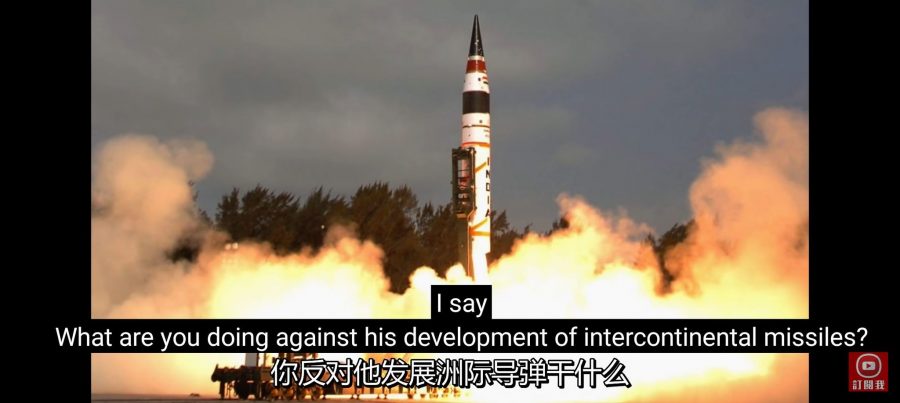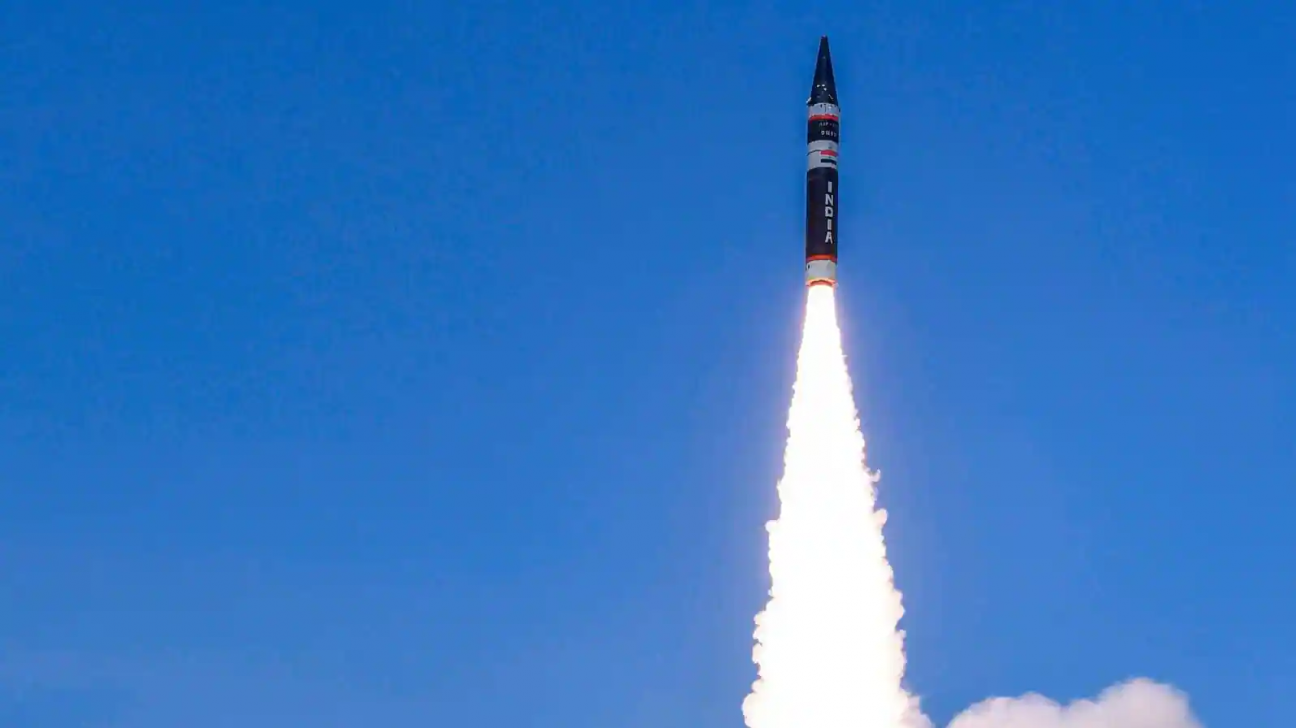At the height of political turmoil in Pakistan, the army conducted a test of its nuclear-capable missile Shaheen-III.
This was the second time the missile was fired in the last two years, with the last test on 20 January 2021. While DG ISPR, Pakistan, said that the “test flight was aimed at the revalidating various design and technical parameters of the weapon system,” the timing of the test raises questions.
Shaheen-III Aimed At India’s Northeast?
The development phase of Shaheen-III began in the early 2000s after India first test-fired Agni-III, which was capable of hitting any target inside Pakistan.
Shaheen-III is a nuclear-capable land-based surface-to-surface medium-range ballistic missile. The missile was first test-fired on 9 March 2015 and displayed during a military parade in March 2016.
It is Pakistan’s longest-range missile, with a range of 2,750 kilometers. The missile uses a two-stage, solid propellant propulsion system. The road-mobile missile was mounted on a Chinese transporter erector launcher.

According to Lieutenant General (Retd), Khalid Kidwai, Shaheen-III was designed to target India’s Northeast and island commands.
In an interview at the Carnegie International Nuclear Policy Conference in 2015, the general said that “Shaheen-III is designed to reach Indian islands so that India cannot use them as “strategic bases” to establish “second-strike capability.”

Versatility Offered By Agni-V
Given that Shaheen-III is Pakistan’s most powerful missile, it is essential to see how it fares with India’s most potent nuclear-capable missile — Agni-V.
Agni-V is a nuclear-capable intercontinental ballistic missile (ICBM) developed by the Defense Research and Development Organization (DRDO). The missile has an operational range of 5,500-8,000 kilometers.
Agni-V uses a three-stage, solid propellant propulsion system and is transported by a truck and launched with a canister. Its maximum velocity during the terminal phase reaches Mach 24. It is guided by a highly accurate ring laser gyroscope inertial navigation system that can strike a target within 30 meters.
However, Agni-V was developed primarily to enhance India’s nuclear deterrence against China. With a range of more than 5,000 kilometers, Agni-V can reach China’s eastern seaboard, where most of its economic output is concentrated.
The missile was deployed by the Strategic Forces Command of India in 2018.

Shaheen-III More Close To Agni-III
In hindsight, there is no comparison between Shaheen-III and Agni-V as the latter completely outguns Shaheen-III due to its superior navigation system, propulsion, range, and terminal phase velocity. On top of that, Agni-V is an ICBM, whereas Shaheen-III is a medium-range ballistic missile. A better Indian missile to compare with Shaheen-III will be Agni-III.
Agni-III is an intermediate-range ballistic missile deployed into service in 2011 as a successor to Agni-II. Agni-III has a range of 3,000-3,500 kilometers with the capacity to carry a payload of 1,500 kg.
Like Shaheen-III, Agni-III also has two-staged, Solid propellant propulsion. Agni-III has an edge over Shaheen-III in mobility and launch versatility.
While Shaheen-III is only road-mobile, Agni-III is both rail and road-mobile. Agni-III also has a superior guidance system than Shaheen-3. Agni-III operates on a Ring Laser Gyroscope inertial navigation system (same as Agni-V) and is augmented by GPS satellite guidance. DRDO is also conducting night trials to enhance the missile’s capability and develop readiness to handle the weapon during the night hours.
With its enhanced range, Pakistan sees Shaheen-III as a credible deterrence against India’s superior missile technology.

Farrukh Salim, a Pakistani political scientist, stressed that “Pakistan seems to be aiming at competing with India and Pakistan’s aims seem to revolve around creating a credible deterrence, and a credible deterrence is bound to strengthen strategic stability.”
Pakistan thinks that the Shaheen-III can impede India’s second-strike capability. However, it is essential to note here that India has a functioning nuclear triad, and a mere targeting of its land-based launching facilities will not disable India’s second-strike capability.
Pakistan has come a long way in creating credible deterrence with the induction of Shaheen-III. However, they are still way behind India in missile technology. They will take years to catch up, even with the help of China.
- Written By ET Desk
- Contact the author at etdesk@eurasiantimes.com
- Follow EurAsian Times on Google News




